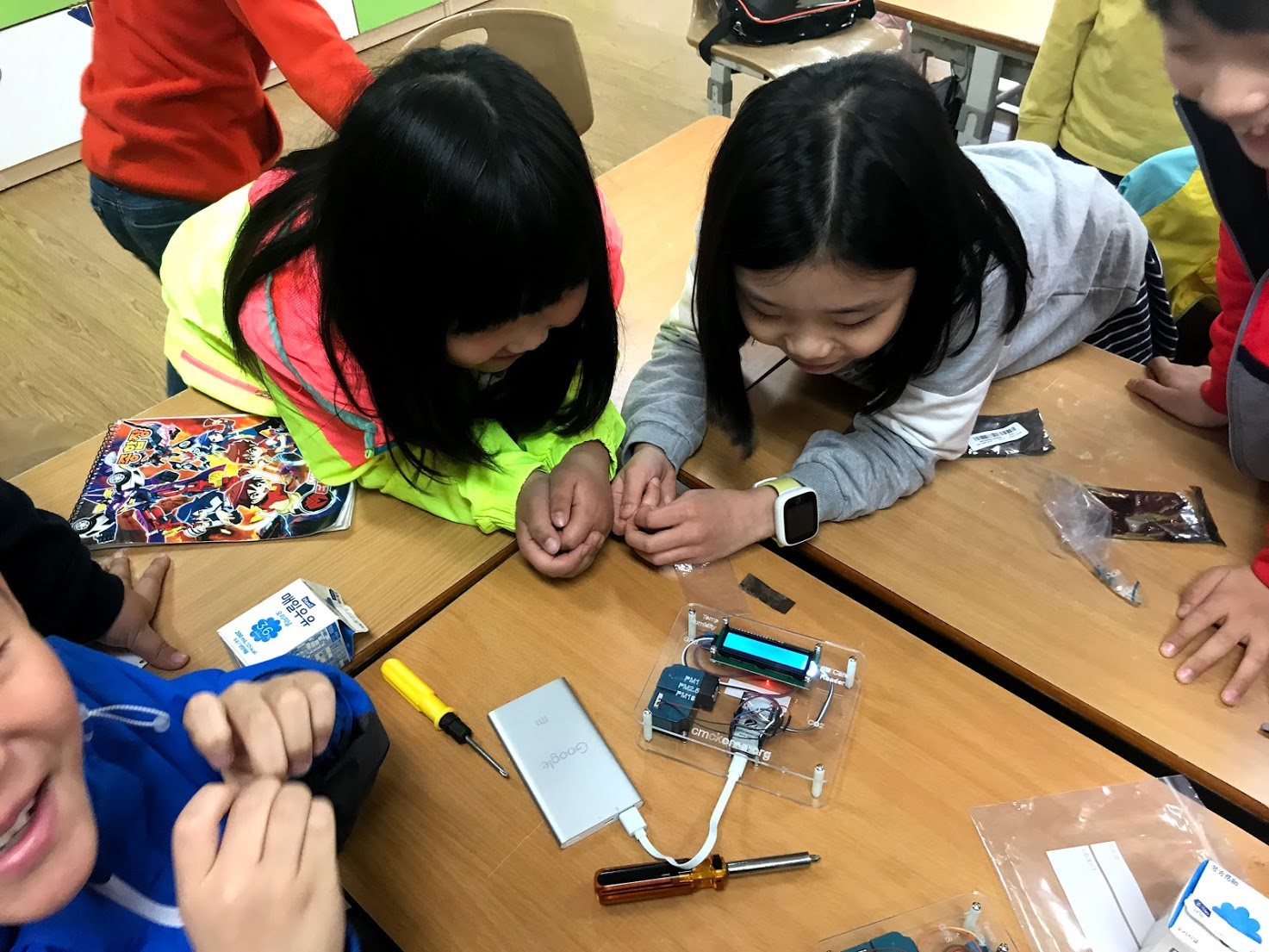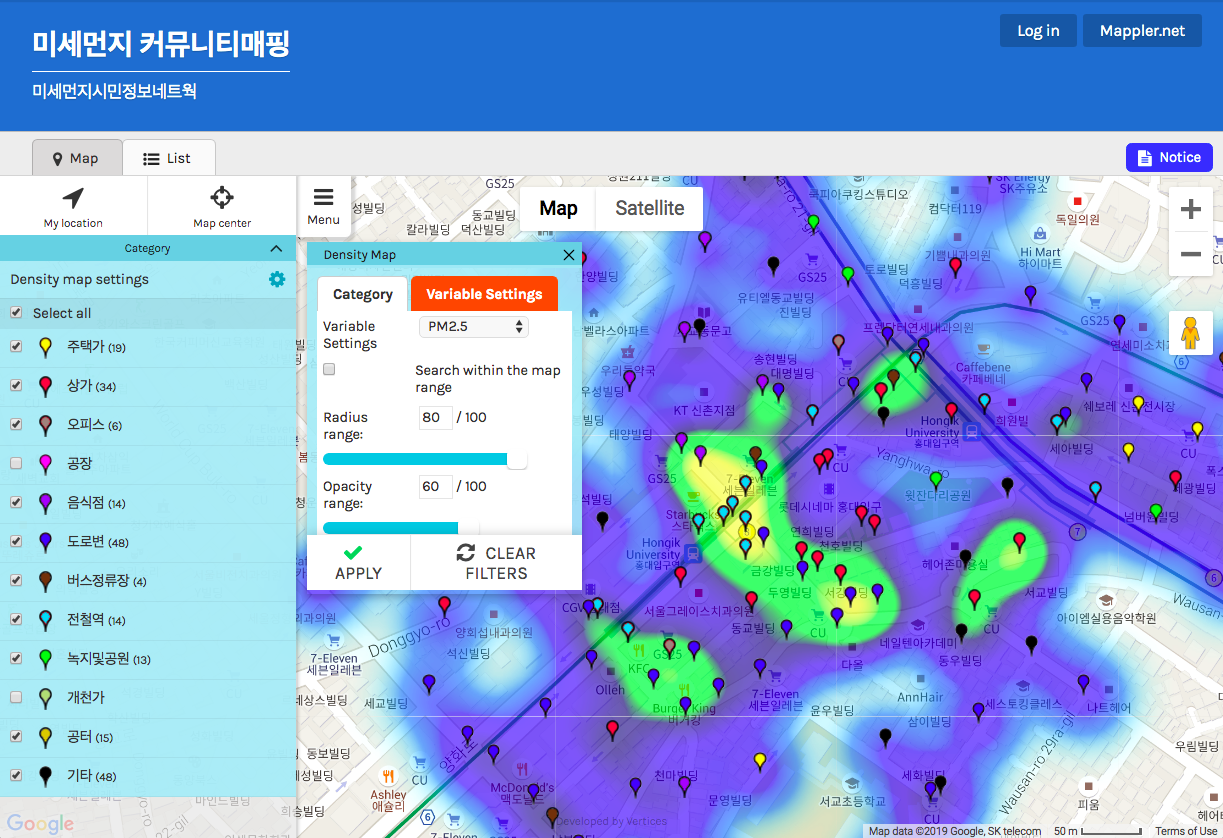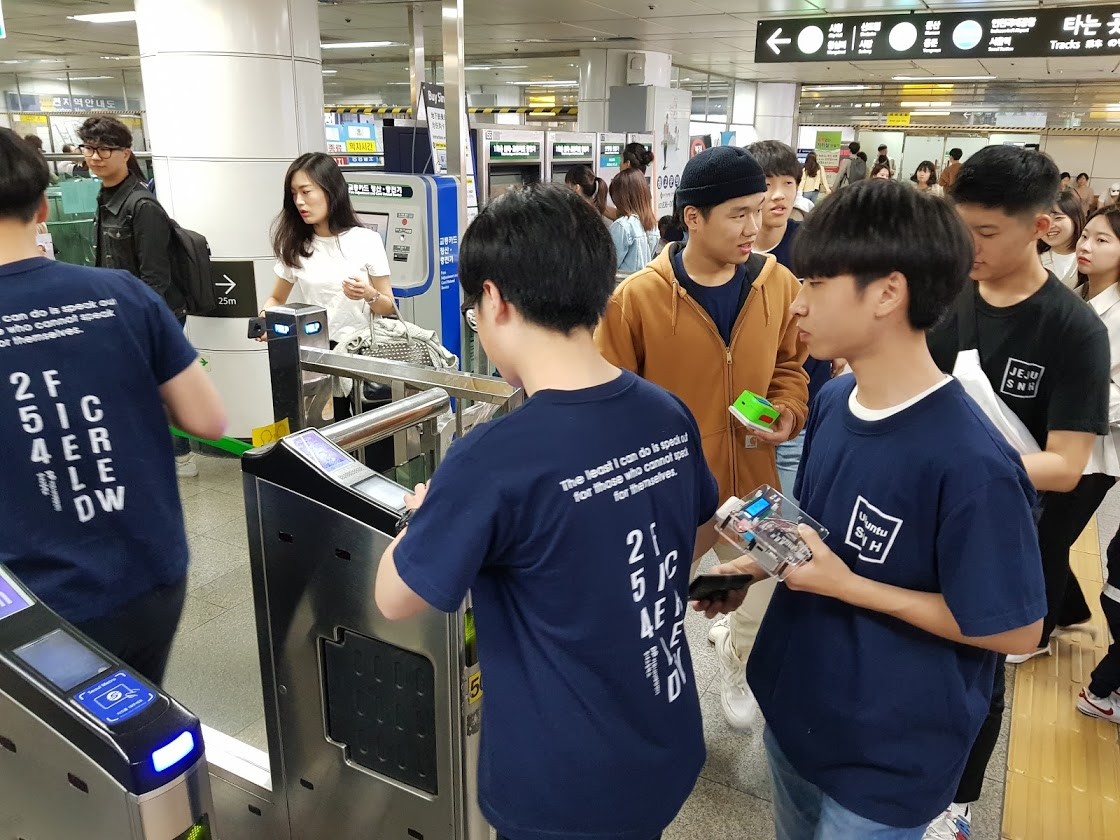Community Mapping for K-12 Students
Measuring Fine Dust with Community Participatory Mapping
By Wansoo Im, Ph.D.
Department of Family and Community Medicine
National Community Mapping Institute
Meharry Medical College
Nashville, TN
The Community Mapping Center in Seoul, South Korea is a non-profit organization that promotes civic engagement and empowerment using location-based technology. The Center was founded in 2013 by Dr. Wansoo Im who is currently an associate professor at the Department of Family and Community Medicine and a director of the National Community Mapping Institute at Meharry Medical College in Nashville, Tennessee. The Center has used community participatory mapping, also known as “Community Mapping” to educate, engage, and empower underprivileged community members.
In recent years, South Koreans have struggled with severe air pollution at record highs that are severely detrimental to their health. There is no clear understanding of what sources exactly contribute to the high levels of PM2.5, which are dangerous, atmospheric particulate matters, in South Korea. Despite government initiatives to mitigate the impact of PM2.5 no significant reduction in PM levels have been recorded.
The Community Mapping Center is working to develop the Particulate Matter Citizen Information Network (PMCIN) to educate the public and better understand what determines the levels of fine dust in the air.
PMCIN is an open data platform that connects community collected air pollution data with existing air pollution monitoring data, leveraging existing work and systems. The portal is accessible to the public and the interactive map has relevant GIS layers, such as wind, air pressure, and traffic and industry point data. The Community Mapping Center has engaged the public from the outset, involving them in the collection and use of PM data to encourage grassroots, public health campaigns for air pollution mitigation in South Korea.
Recently, the Center worked with volunteer organization in South Korea to develop personalized PM monitors (DIY kit) and educate and organize K-12 students on collecting air pollution data.
The most recent data collection effort led by Dr. Im was in April 2019 with students from multiple grade levels. Third grade students assembled dust sensor monitoring kits and learned how to measure the levels of fine dust at the school campus. High school students measured PM levels, temperature, and humidity in Hongdae area and paired this data with land and building usage in the area. They also measured fine dust levels inside each station in the Seoul Metropolitan Subway Station Line 2. The purpose of these efforts were to help students:
– Learn the scientific method, and the process of informed, active civic engagement
– Learn the causes of fine dust and their impact
– Increase students’ environmental sensitivity.
Below are reflections from two students who participated in the event.
JoonYoung Lee (3rd Grade Student at DukGye Elementary School in YangJoo City, South Korea)
I was not interested in fine dust but the topic became very interesting when I made a fine dust monitor and measured the level of fine dust. I learned that fine dust is very harmful for my body, and learned the difference fine dust and ultra fine dust. I hope our air becomes cleaner soon. The fine dust should disappear. I would like to breathe clean air without fine dust as soon as possible. Now I am thinking of my future career because of this project. I want to make a robot that predicts the level of fine dust when I go to a college and let them know there is a robot like that.
SiJoon Kim, a senior at SongNae High School at Bucheon City, South Korea
I learned the characteristics of the areas that showed a high number of PM2.5 when I did community mapping for measuring fine dusk. The PM2.5 levels were much higher in smoking areas, BBQ restaurants, and by parking lots than other areas. I was able to see what activities produced fine dust and I learned how to empty all trash. I felt that we have to do our best to reduce fine dust after I realized how bad the air quality is in our surrounding area. I am interested in our environment, and I would like to share what I learned to the people that I know so they can value the importance of environmental protection.
We measured the level of fine dust in Seoul Metropolitan subway line 2 (inside of the subway, and in the subway station). I usually go to school by train, and I often wondered about the fine dust inside the closed space. For me it was very interesting to measure the concentration of fine dust inside the train. From the process, I was able to learn three things.
The first finding was the relationship between humidity and fine dust. I do not know if this is obvious, but I noticed that the higher the humidity the lower the concentration of fine dust. I was wondering “if the fine dust adheres to the moisture in the air?”
The second finding is that the more people were inside the subway train, the higher was the concentration of fine dust. I thought about this, but I had never checked it myself. By directly measuring the concentration of fine dust inside the subway we found that the more people there are, the higher the concentration of fine dust.
Third, there is a clear difference in the fine dust levels of different subway platforms (open platform on the ground vs. underground). The open platform showed a high level of fine dust than the underground ones. The ambient level of PM2.5 was very high on that day and I didn’t see any air filtering in the open platform. I wonder what the measurements will be when the ambient level of PM2.5 is low.
I want to know where many of these fine dust particles are being generated. I want to make a hypothesis and then start a project to determine the cause of the fine dust by measuring the fine dust to test the hypothesis.
For example, the hypothesis that a coal-based power plant is a major cause of generating fine dust and that the concentration of fine dust around the thermal power plant will be high, and that the cause of fine dust is to be found by measuring the fine dust around the thermal power plant directly.
In urban areas such as Hongdae area (one of the busiest area in Seoul) I could examine bus stops with a lot of moving cars, a factory, a charcoal grill house, and so on. It is possible to find the cause of fine dust and it is an important step to removing the cause professionally just like experts at http://www.ecomamagreenclean.com/ do it. I think it is more necessary to remove the cause of fine dust and develop techniques to replace them instead of finding ways to deal with the problems caused by fine dust.
After measuring fine dust as part of community mapping twice, I changed my behavior. Before, even though the concentration of fine dust was very high I never wore an air filtering mask but now, I wear an air filtering fine dust mask every time the fine dust concentration is high. It is because I learned how fine dust can affect our body from this process. I hope more students will become aware of how serious a problem fine dust is in our society.





